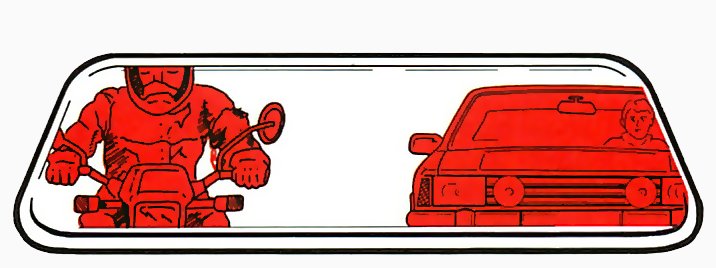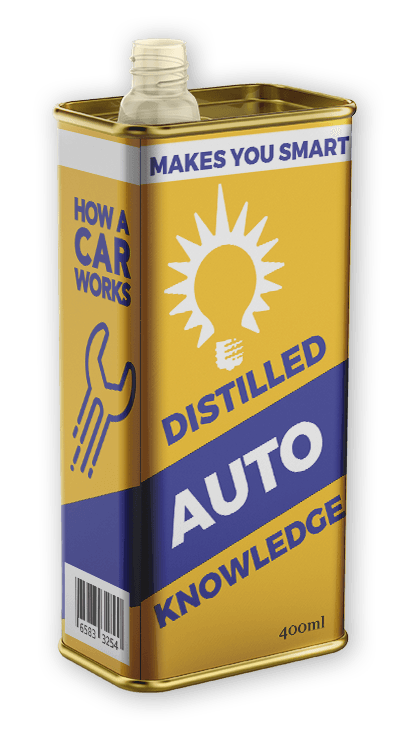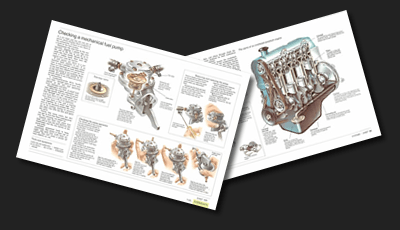Awareness of what is going on behind the car is a vital part of safe driving, yet some drivers still ignore the need to consult the mirror before a manoeuvre. One of the most common causes of accidents is the driver failing to make allowance for the traffic behind him.
Centre mirror
Centre mirror
On ordinary cars, this is the only mirror that is a legal requirement. It shows the driver what is directly behind him, in particular, the distance behind and intentions of following vehicles.
The centre mirror, mounted above the windscreen, is a legal requirement. It gives the driver an overall picture, through the rear window, of any vehicle following the car and how close it is.
This video course is the best way to learn everything about cars.
Three hours of instruction available right now, and many more hours in production.
- 4K HD with full subtitles
- Complete disassembly of a sports car
Some cars, notably old Rovers, had a convex interior mirror which gave a much wider field of view, but it made traffic following the car appear to be much farther away than it actually was.
Wing/door mirrors
Passenger door mirror
This warns the driver of any cyclists and motorcyclists on his nearside or of traffic entering from a slip road. It is particularly helpful during reversing, and is essential for driving on the right-hand side abroad.
The need for a wider angle of rear- ward vision was first catered for by the wing mirror, though this had the
disadvantage of being so far forward that distorting convex glass was necessary, otherwise you could hardly see anything in it.
Wing mirror
This performs much the same role as a door mirror, but, being further away from the driver, it gives a wider field of vision. However its distance away can make it difficult for the driver to read the situation accurately.
Another problem with wing mirrors was that, if knocked, they could not be adjusted from the driver's seat - you had to get out of the car and adjust it with a spanner. This was solved by making the mirror spring-mounted. But now wing mirrors have given way to door mirrors, which are nearer to the driver and so can be easily adjusted, and also give a wider field of view.
Estate cars have to have outside mirrors by law; but it is sensible for all cars to have at least a door mirror on the driver's side and preferably one on the passenger side as well.
Passenger door mirrors are helpful when you reverse, and they are essential when you are driving on the right-hand side abroad. They also let you see if, for example, there is a cyclist coming up on the left side of the car.
The blind spot
Even a combination of centre and door mirrors still does not show the driver everything behind him. These hidden areas are called blind spots, and one of the most dangerous is just over the driver's right shoulder. For example, if you are in the centre lane of the motorway and want to overtake, you may not see a car already on the outside lane driving alongside you, who may also be about to overtake you.
Another occasion when the restricted angle of vision of a door mirror can be hazardous is joining a motorway from the slip road. You can see traffic from behind and it may look safe to pull out. But again, there could be a vehicle alongside.
In both situations, the only safe answer is a quick turn of the head over your shoulder to make sure that there is no vehicle hiding out of view of the mirror. But don't gaze you cannot afford to take your eyes off the road ahead for more than an instant.
To overcome the problem of the limited angle of view of door mirrors, you can get stick-on extra mirrors called blind spot mirrors (see sideline, left).
On some cars, such as Volvos, the outer part of the mirror gives a much wider picture, and although distorted, reveals another vehicle or motorcycle that may be out of view of an ordinary door mirror.
Flat or convex?
One solution to the blind spot problem would be to make the whole of the door mirror convex to enlarge its field of view. But the disadvantage of this is that it makes other vehicles look further away than they really are, which could be dangerous. So most door mirrors on the driver's side contain flat, non-distorting glass.
But convex glass is often used for the nearside door mirror because it is much farther away, and here the diminishing effect will be less confusing for the driver.




